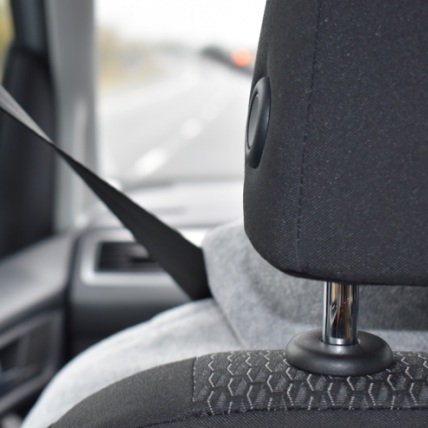Safety Features to Consider When Buying a Car

When it’s time to buy a new car, we all have our own ideas about what makes it the right fit. Some of us want more legroom, while others want more cargo space. Then there are those who merely want a killer sound system and great rims.
Whether you like your vehicles big and brawny or small and sporty, it’s important to make sure your next car measures up when it comes to important safety features. Here are five safety features you may want your car to have before it lands on your “most wanted” list:
1. Airbags. Airbags have been standard since 1998, and today they’re so sophisticated they can detect the weight and position of the driver and front passenger. That’s important because it can further reduce the risk of injury to drivers and occupants. Crash tests by the Insurance Institute for Highway Safety have found side-impact airbags are an essential safety feature, but those that protect both the head and the chest are more effective than those that only protect the chest.
2. Antilock brakes (ABS). ABS became standard in the 1990s, so chances are the cars you’re looking at will have them. They help drivers to make shorter stops and keep brakes from locking up when the brake pedal is pushed with a great deal of pressure. This helps the driver to maintain control of steering even while braking, which is important in avoiding accidents.
3. Electronic Stability Control (ESC). Like antilock brakes, ESC now comes standard on cars built after 2012. ESC uses computerized sensors to help the vehicle avoid sliding or skidding. It’s particularly helpful – and important – in taller vehicles like SUVs and pickup trucks, which have a greater tendency to roll over.
4. Tire pressure monitoring system (TPMS). Your tires are one of the most important parts of your car, but they’re also very vulnerable to damage from the road. Changes in temperature can decrease their pressure, leading to blowouts or increased wear. Make sure if the car you’re buying has a TPMS, that it’s working properly – but also make sure you check your tires’ pressure every month with a manual gauge.
5. Adaptive headlights. Nearly half of all accidents occur at night. Adaptive headlights help improve night vision by reacting to the speed, steering and elevation of the car, then illuminating the road according to the direction of the car. This relatively new technology helps reduce glare. In addition to helping you see your path more clearly, it makes you more noticeable to other drivers.
Of course, all the electronic features in the world need one thing to ensure they’re effective – you. Being alert and aware is the best way to ensure you’re driving safely.
Republished from Nationwide Insurance.

August 01, 2017
by
Scott Ligouri
Managing Partner


